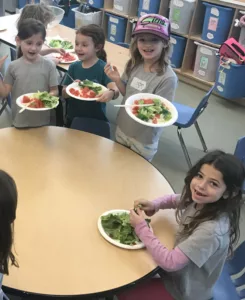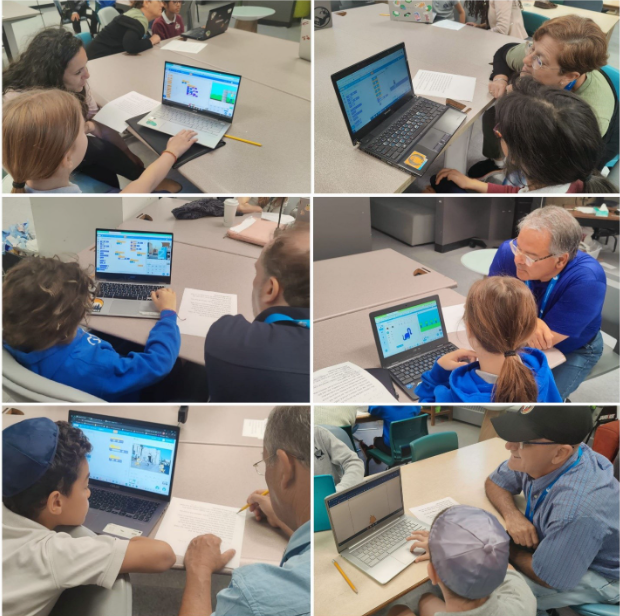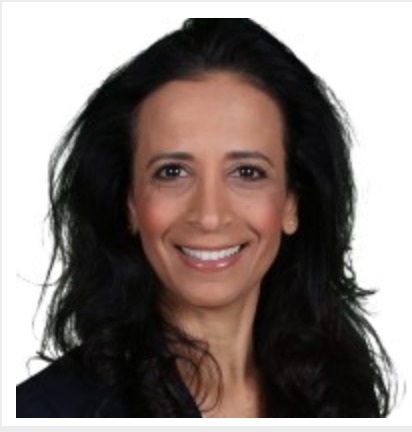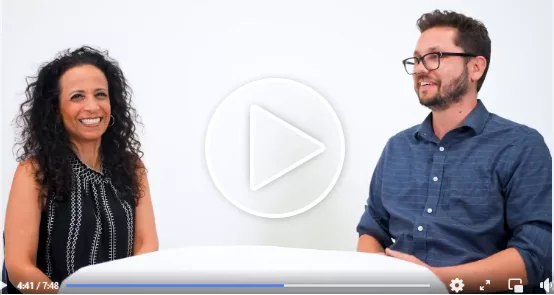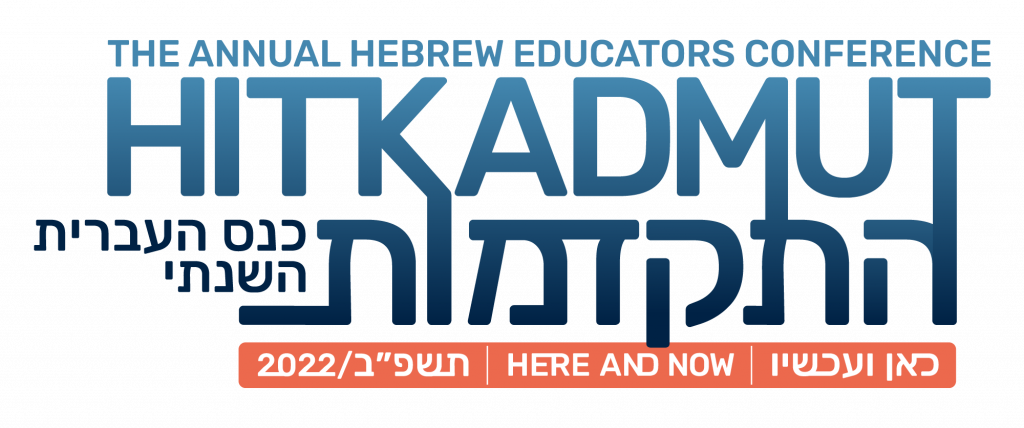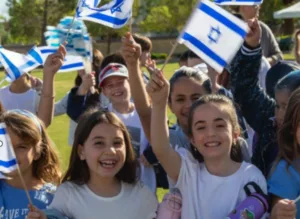 Close your eyes and imagine being a child in the middle of a desert, growing up and being educated in an oasis of Jewish joy. What picture comes to mind?
Close your eyes and imagine being a child in the middle of a desert, growing up and being educated in an oasis of Jewish joy. What picture comes to mind?
Your imagination may have taken you to one of many communities in Israel. Or, it may have taken you to the Dr. Miriam and Sheldon G. Adelson Educational Campus, a community day school in Las Vegas, Nevada, where close to 700 children from age 18 months to 18 years, of diverse backgrounds, receive a world-class education in General and Judaic Studies, in English and in Hebrew.
Hebrew at the Center’s Member School Highlight sat down with the Head of School, Alli Abrahamson, and the lower school’s Hebrew leader, Dina Rudaizky, to learn about their focused efforts to strengthen the Hebrew language program at their oasis known as the Adelson Campus
Knowing that their community wished to take a comprehensive approach to growing Hebrew language learning at the Adelson Campus, their multi-year partnership with Hebrew at the Center began in the spring of 2023. In turning to Hebrew at the Center, their goal was to establish Adelson Campus’ own K-5 scope and sequence, based on the ACTFL standards for teaching of foreign languages, which would lead their students to balanced competency in reading, writing, listening, and speaking. Luckily, they already had on board excellent teachers who were open to learning, and who are appreciative that the school was willing to invest in their professional growth as teachers of Hebrew language.
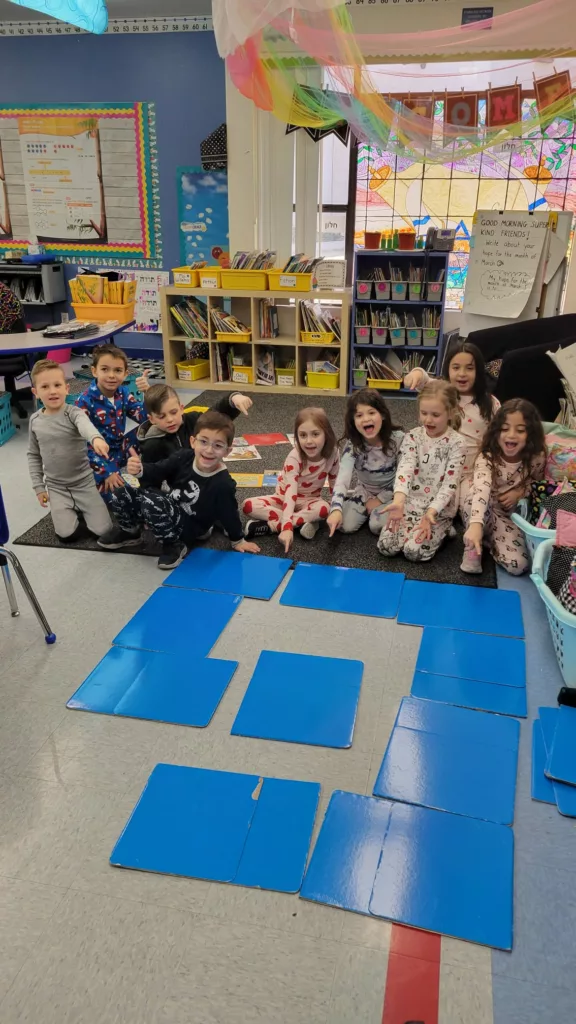 Now close your eyes again and imagine building a house in that desert. You’d first need to envision the house and how it fits into the unique landscape. Then you’d need to develop an architectural plan. Only then could you design the spaces within the house, such as kitchens, bedrooms, and bathrooms, created by utilizing commercially available components, such as cabinets, lighting, and furnishings.
Now close your eyes again and imagine building a house in that desert. You’d first need to envision the house and how it fits into the unique landscape. Then you’d need to develop an architectural plan. Only then could you design the spaces within the house, such as kitchens, bedrooms, and bathrooms, created by utilizing commercially available components, such as cabinets, lighting, and furnishings.
The process of restructuring Adelson Campus’ Hebrew program began with coming together to develop a bold yet realistic vision for Hebrew language at this particular school, in this particular place. Then came the creation the “architectural plans,” what we call “scope and sequence,” before undertaking the design of rooms, what we call instructional units, utilizing commercially available components, otherwise known as published curriculum.
Throughout the summer of 2023, Dina Rudaitsky worked with her coach, a senior educator from Hebrew at the Center, to developed Adelson Campus’ scope and sequence for the lower school, the architectural plans of education. The next step, beginning in the fall of 2023, was designing each “room,” or instructional unit. For this phase, all lower school Hebrew teachers received coaching from a Hebrew at the Center coach to develop a complete unit plan for their own grade level, including all aspects of language instruction – reading, writing, listening, and speaking – as well as formative and summative assessment of student learning. Adelson Campus’ teacher-developed units incorporate commercially available curricular materials from Nifla’ot (Matach) and Haverim B’Ivrit, and are assembled to align with the blueprint, that is, Adelson Campus’ unique scope and sequence. The plan is that after being carefully coached through the first unit, Hebrew teachers will become more independent in developing subsequent units of instruction.
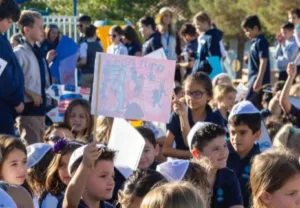
Thanks to having received Adelson Campus’ unique scope and sequence, teachers know the details of what students need to learn and achieve over time. They can utilize the published materials as components to reach their iterative goals, not just teach what comes next in the textbook series.
Adelson Campus’ reimagined Hebrew language program is a work in progress. They are, after all, a campus, not a house. As a nursery through 12th grade school, there are many more houses to build in this desert landscape. If all goes as planned, in a few years, when you close your eyes and imagine that oasis of Jewish joy in the middle of the desert, it will be much harder to discern if that oasis is in Israel or in Nevada.

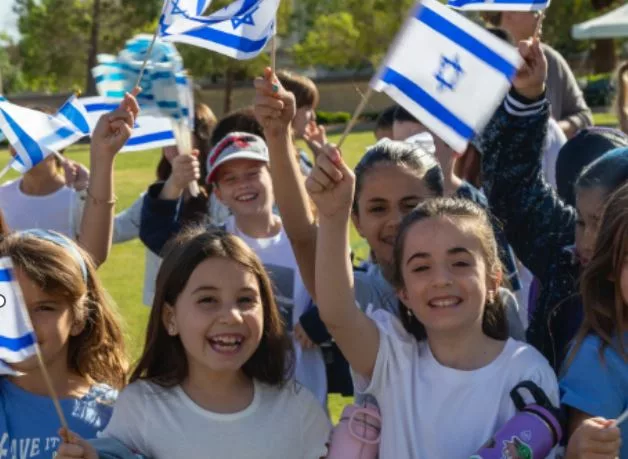
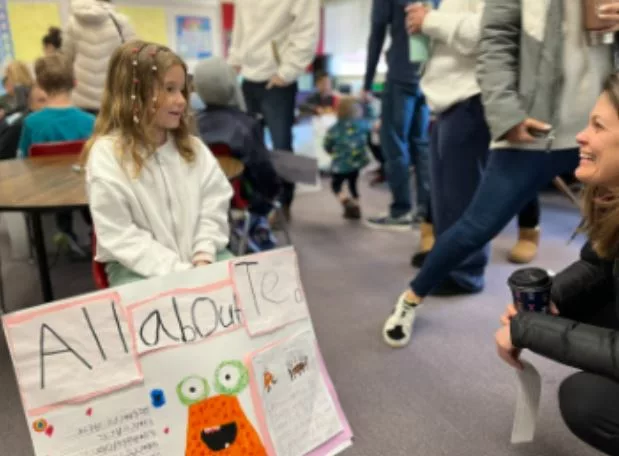
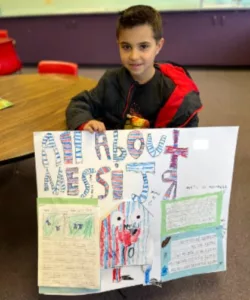 Denver Jewish Day School has a long and proud history as a member of Hebrew at the Center. Over the years, the status of both Hebrew language and the Hebrew teaching faculty have risen in stature in this K-12 community day school in the Mile-High City. Today, secular and Hebrew language studies flourish together, on equal footing, side-by-side but also intertwined, most notably through PBL units, meaning Project Based Learning or Project Based Learning. Either way, PBL is a student-centered pedagogy that involves a dynamic classroom approach in which it is believed that students acquire deeper knowledge through active exploration of
Denver Jewish Day School has a long and proud history as a member of Hebrew at the Center. Over the years, the status of both Hebrew language and the Hebrew teaching faculty have risen in stature in this K-12 community day school in the Mile-High City. Today, secular and Hebrew language studies flourish together, on equal footing, side-by-side but also intertwined, most notably through PBL units, meaning Project Based Learning or Project Based Learning. Either way, PBL is a student-centered pedagogy that involves a dynamic classroom approach in which it is believed that students acquire deeper knowledge through active exploration of 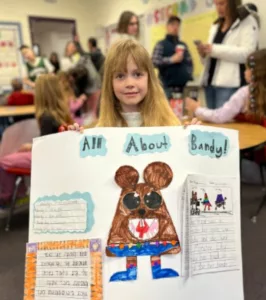 Years back Denver Jewish Day School made the pioneering decision to invest serious thought, time, and funding for a customized, multi-year PD program for their Hebrew language staff through Hebrew at the Center. They went “all in” with the equivalent to what is now referred to as “Package 3: Best Recommended Value Package.” Around this time, Elana Shapiro became the elementary school principal and the lower division Hebrew Coordinator, Ravit Eldar, set out to earn a master’s degree in Hebrew language instruction at Middlebury College. Such intensive professional development led to significantly increased expertise in Hebrew language teaching and learning for the entire lower school Hebrew faculty. Maintaining basic membership, year after year, which includes some one-on-one coaching hours with their long-time and beloved
Years back Denver Jewish Day School made the pioneering decision to invest serious thought, time, and funding for a customized, multi-year PD program for their Hebrew language staff through Hebrew at the Center. They went “all in” with the equivalent to what is now referred to as “Package 3: Best Recommended Value Package.” Around this time, Elana Shapiro became the elementary school principal and the lower division Hebrew Coordinator, Ravit Eldar, set out to earn a master’s degree in Hebrew language instruction at Middlebury College. Such intensive professional development led to significantly increased expertise in Hebrew language teaching and learning for the entire lower school Hebrew faculty. Maintaining basic membership, year after year, which includes some one-on-one coaching hours with their long-time and beloved  Students conducted consultations with their peers and their teacher.
Students conducted consultations with their peers and their teacher. 
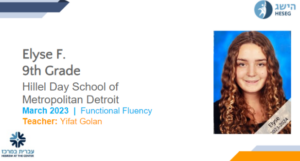
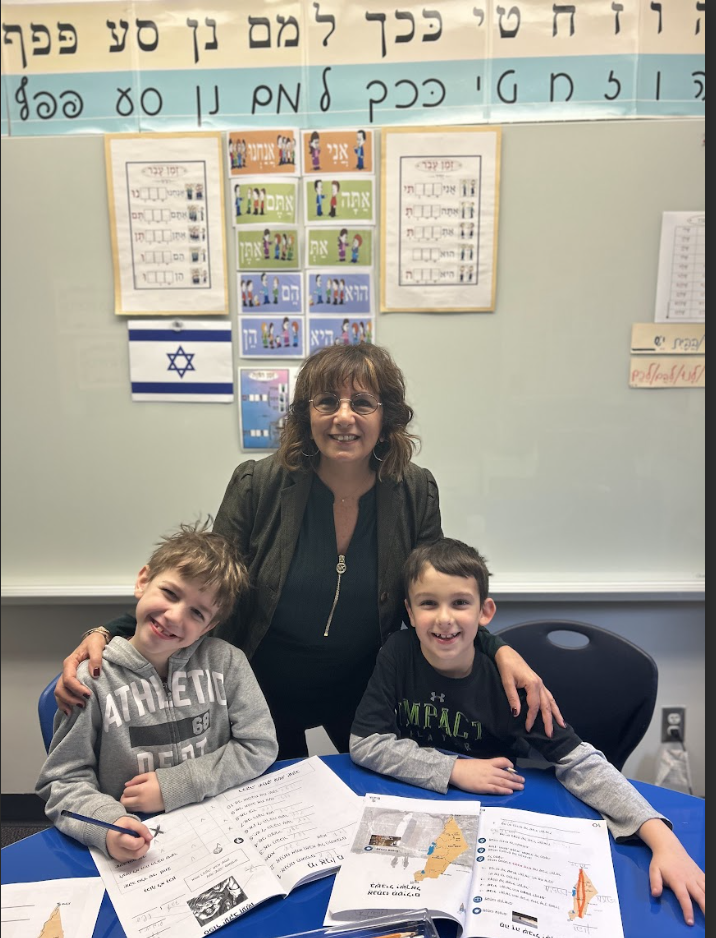
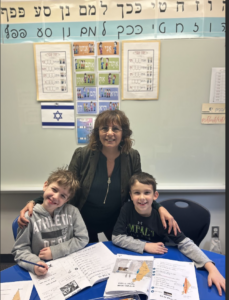 Recent Member Highlights have focused on new (first year) members of Hebrew at the Center, but this week, we point the spotlight on Bialik Hebrew Day School of Toronto, a large early childhood through 8
Recent Member Highlights have focused on new (first year) members of Hebrew at the Center, but this week, we point the spotlight on Bialik Hebrew Day School of Toronto, a large early childhood through 8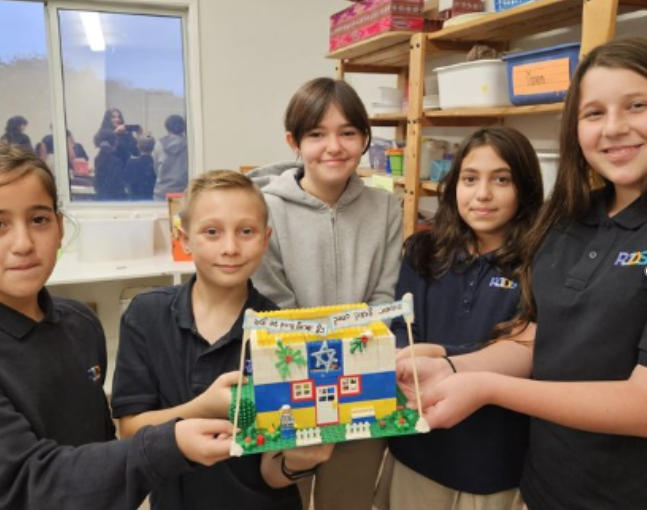
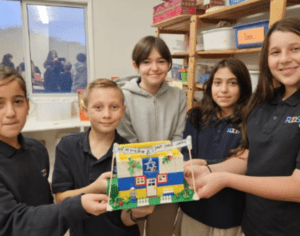 “I’m not sure I’m the right person for you to speak to. You see, I don’t speak Hebrew.” Thus began a delightful conversation with Sabrina Bhojani, Head of School of the Richmond Jewish Day School, who was immediately assured that she is in excellent company, as more and more Heads of Jewish schools are brought onboard to the top leadership positions following strong and successful careers in public or independent schools.
“I’m not sure I’m the right person for you to speak to. You see, I don’t speak Hebrew.” Thus began a delightful conversation with Sabrina Bhojani, Head of School of the Richmond Jewish Day School, who was immediately assured that she is in excellent company, as more and more Heads of Jewish schools are brought onboard to the top leadership positions following strong and successful careers in public or independent schools.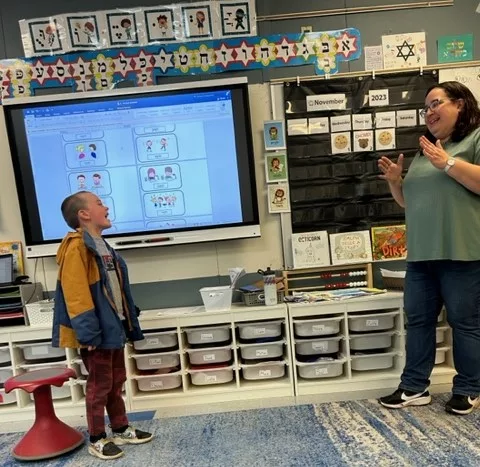
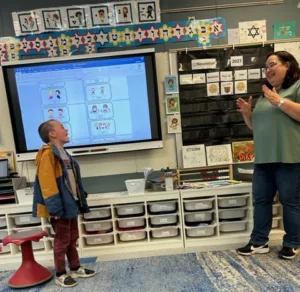 Hebrew has always been a highlight of the day for students at PJA, the Portland Jewish Academy, in Portland, Oregon, but ever since Hamas’ inconceivable, evil, and vicious attack on Israeli civilians along the Gaza border, triggering a war between Israel and
Hebrew has always been a highlight of the day for students at PJA, the Portland Jewish Academy, in Portland, Oregon, but ever since Hamas’ inconceivable, evil, and vicious attack on Israeli civilians along the Gaza border, triggering a war between Israel and 
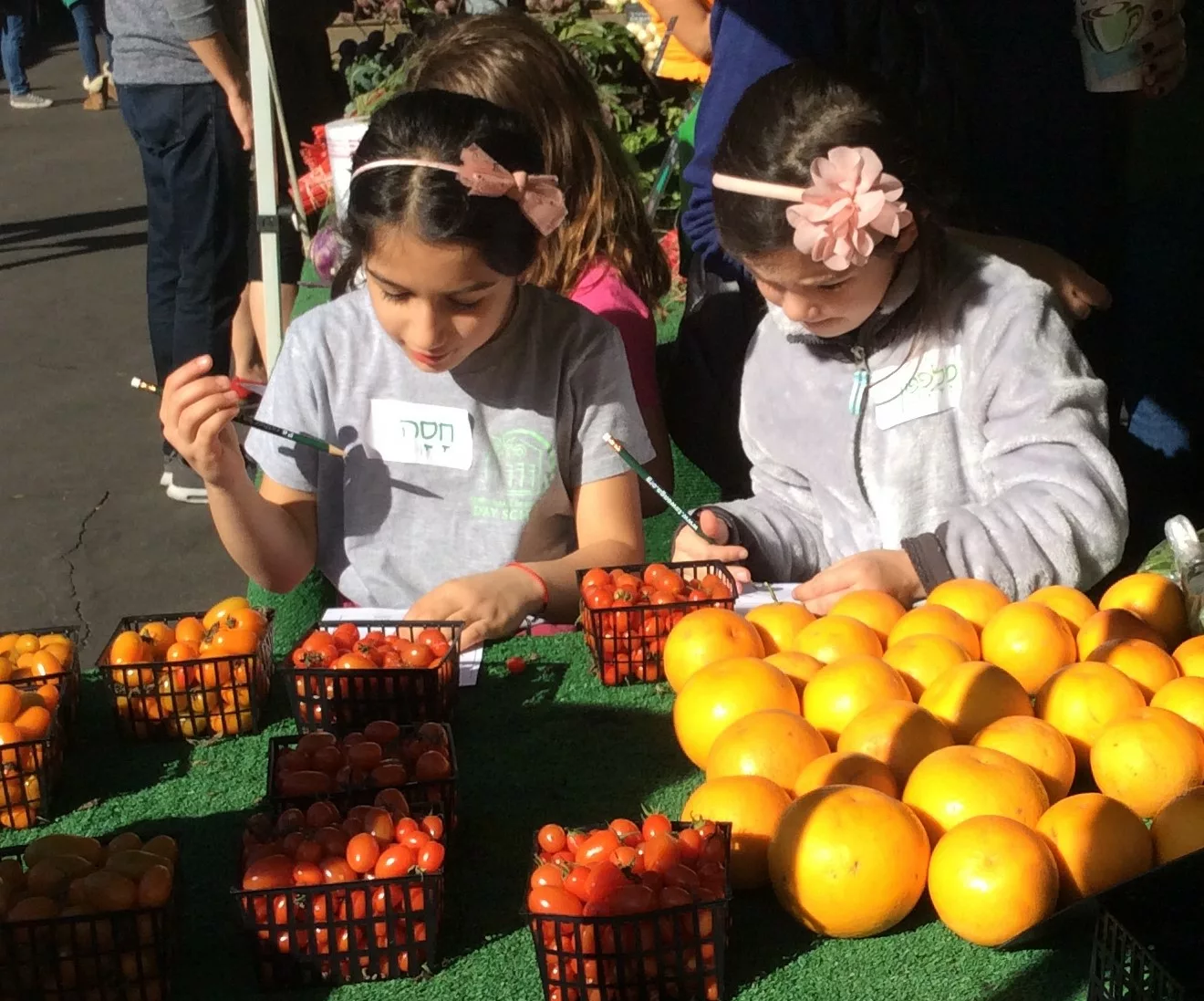
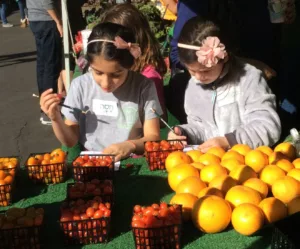 Imagine the surprised look on the face of the local farmer when a little American child approaches and asks:
Imagine the surprised look on the face of the local farmer when a little American child approaches and asks: